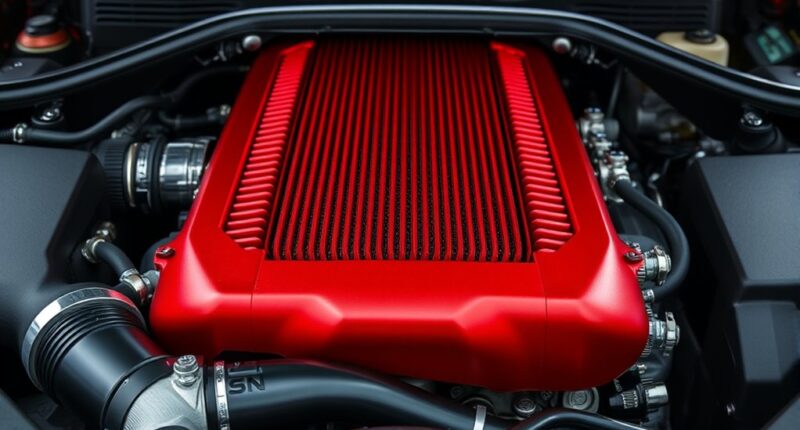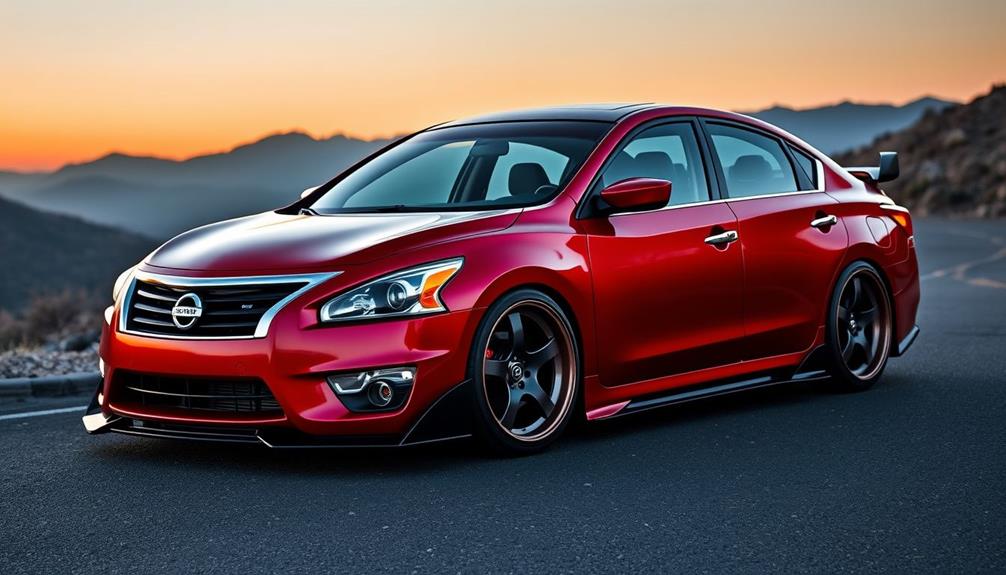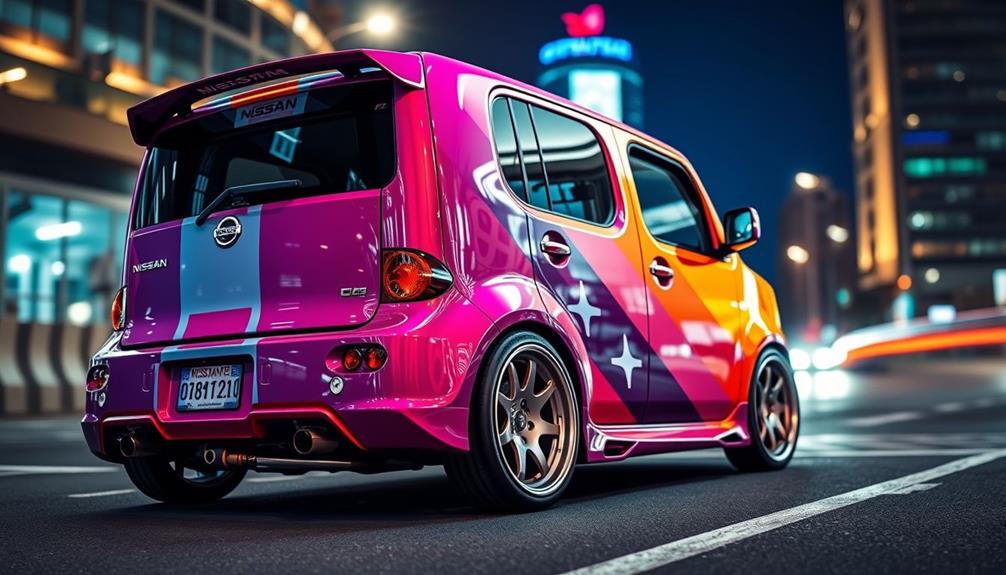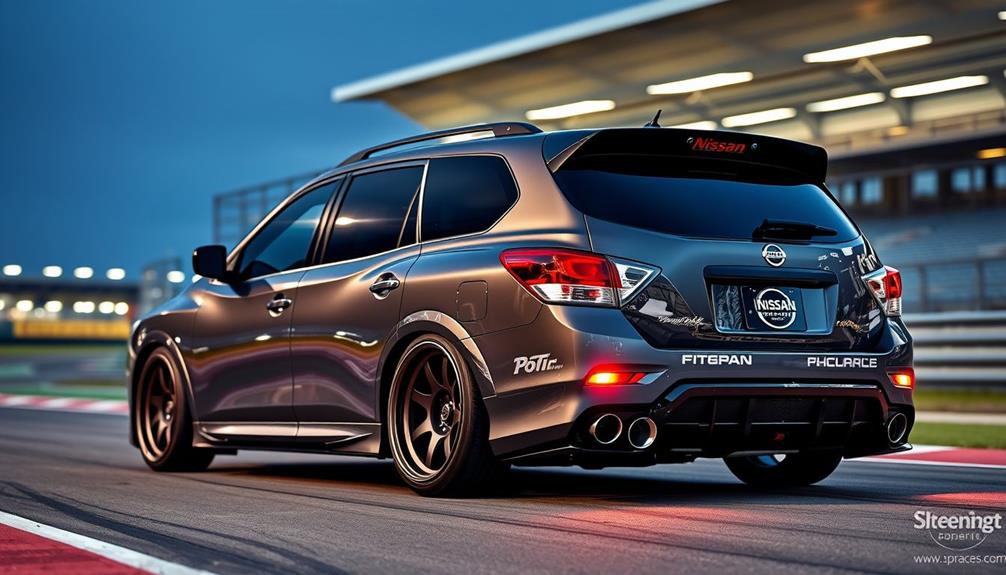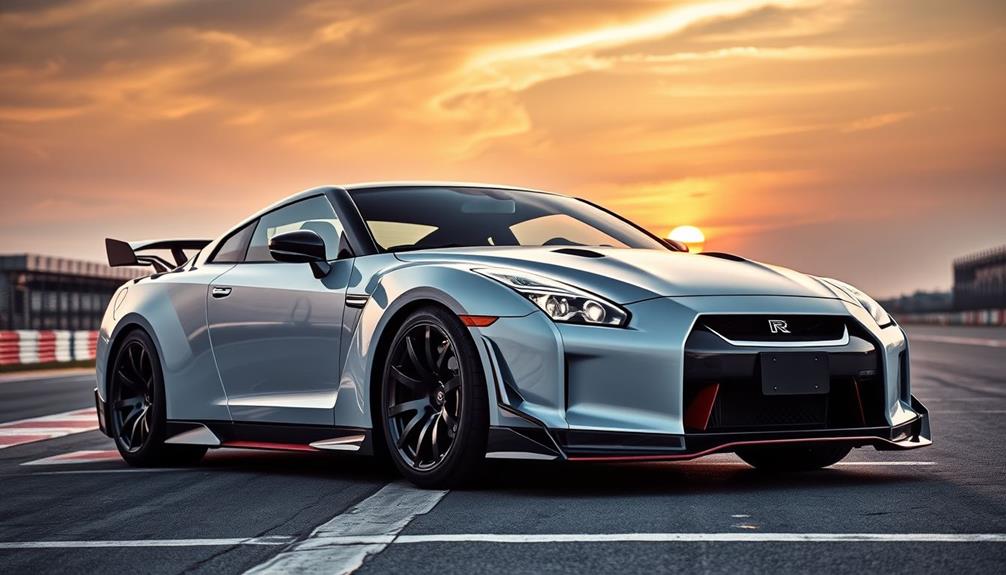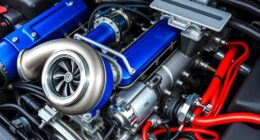Upgrading your VR30DDTT heat exchanger on the Q50 Red Sport boosts cooling efficiency during intense driving conditions. A high-performance unit increases heat dissipation, lowers coolant temperatures, and helps prevent thermal throttling, especially in hot weather or spirited driving. Stock exchangers may fall short under demanding loads, so an upgrade can improve engine longevity and consistent power. To guarantee you get the most out of your setup, there’s more to explore about the best options and installation tips.
Key Takeaways
- Upgrading to a high-performance heat exchanger improves cooling efficiency during aggressive driving and hot weather.
- Aftermarket heat exchangers feature larger surface areas and better materials for more effective heat dissipation.
- Proper installation and compatibility with auxiliary cooling components maximize performance gains and system reliability.
- Upgraded heat exchangers help prevent thermal throttling, maintaining consistent engine power under demanding conditions.
- Combining a high-flow thermostat and additional cooling modifications enhances overall system durability and cooling effectiveness.

Upgrading the heat exchanger on your VR30DDTT-powered Q50 Red Sport can markedly improve cooling efficiency and overall performance. The cooling system plays a vital role in maintaining ideal engine temperatures, especially during spirited driving or hot weather conditions. When your vehicle’s cooling system isn’t functioning at its best, you risk decreased power, increased wear, and even potential damage. That’s why exploring effective upgrade options for your heat exchanger can make a substantial difference.
Upgrading your VR30DDTT heat exchanger boosts cooling efficiency and engine performance during demanding driving conditions.
The stock heat exchanger is designed to balance performance with durability, but it might fall short under more demanding conditions. If you notice your engine running hotter than usual or experiencing thermal throttling, it’s time to consider an upgrade. High-performance aftermarket heat exchangers provide greater surface area, better heat dissipation, and improved coolant flow. These modifications help keep your engine cooler, guaranteeing consistent power delivery even under heavy loads.
When evaluating upgrade options for your cooling system, focus on units crafted specifically for the VR30DDTT engine. Many aftermarket brands offer high-capacity heat exchangers made from premium materials like aluminum, which boasts excellent thermal conductivity and lightweight properties. Some upgrades feature enhanced fin design or increased core thickness, further boosting heat transfer capabilities. Installing such a component can markedly lower coolant temperatures, especially during track days or aggressive driving.
Beyond just choosing a larger or more advanced heat exchanger, consider the entire cooling system’s compatibility. Upgrades often include additional components like high-flow hoses, upgraded radiator caps, or even auxiliary cooling fans. These can work synergistically to maximize cooling performance. For instance, a high-flow thermostat paired with a beefed-up heat exchanger ensures coolant circulates more efficiently, reducing hot spots and thermal stress on the engine.
Installation is another key aspect. While some upgrade options are straightforward bolt-on replacements, others may require more involved modifications. It’s worth consulting with a professional or researching detailed installation guides to ensure proper fitment and performance gains. Proper installation not only guarantees the effectiveness of your upgrade but also prolongs the life of your cooling system components.
Improving cooling efficiency with these upgrades can also contribute to variable speed compressors and smart technology integration, further enhancing overall system performance and longevity.
Frequently Asked Questions
How Do Heat Exchanger Upgrades Affect Engine Longevity?
Improving your cooling system with heat exchanger upgrades enhances thermal management, which directly benefits engine longevity. When your heat exchangers efficiently dissipate heat, your engine operates cooler and more consistently, reducing stress on components. This prevents overheating and limits wear and tear. By investing in better heat exchangers, you make certain your engine remains reliable over time, ultimately extending its lifespan and maintaining peak performance.
Are There Any Warranty Implications With Aftermarket Heat Exchangers?
Sure, you can upgrade your heat exchanger, but don’t expect the warranty gods to be pleased. Warranty considerations often lean toward “strictly no aftermarket parts,” especially if a failure is linked to the upgrade. Always check the aftermarket brand reputation; some brands might play nice, while others could invite trouble. If you value your warranty, stick to OEM or well-reviewed brands, and keep your upgrades documented.
Which Brands Offer the Best Heat Exchangers for VR30DDTT?
When choosing a heat exchanger, you want a brand with a strong reputation for quality and durability. Brands like Mishimoto, CSF, and Koyo are known for their reliable materials and solid build quality. They use high-grade aluminum or copper, guaranteeing longevity and excellent heat transfer. By selecting a reputable brand, you minimize warranty concerns and ensure your upgrade performs effectively under demanding conditions.
What Is the Typical Installation Time for These Upgrades?
Did you know that installing a heat exchanger typically takes around 4 to 6 hours? Your installation duration depends on your experience and the complexity of your vehicle. You should consider labor considerations, such as removing other components or upgrading related parts. If you’re doing it yourself, plan for extra time, but professional mechanics usually complete the upgrade efficiently within this timeframe. Always allocate time for troubleshooting and testing afterward.
Can Heat Exchanger Upgrades Improve Overall Vehicle Performance?
Upgrading your heat exchanger can considerably boost your vehicle’s cooling efficiency, which helps maintain ideal engine temperatures during intense driving. Improved cooling means your engine runs more efficiently, reducing heat-related stress. This can lead to noticeable power gains, especially in high-performance situations. Overall, upgrading your heat exchanger enhances both cooling and performance, ensuring you get better throttle response and sustained power, making your driving experience more dynamic and reliable.
Conclusion
Upgrading your VR30DDTT Q50 Red Sport’s heat exchanger is like giving your car a gust of fresh air—cooler, more efficient, and ready to perform. When you make these small but mighty changes, you’re revealing peak potential and avoiding overheating pitfalls. Think of it as tuning your engine’s heart, ensuring it beats strong no matter how hard you push. With these upgrades, your ride will stay cool under pressure, like a champion in a heatwave.
